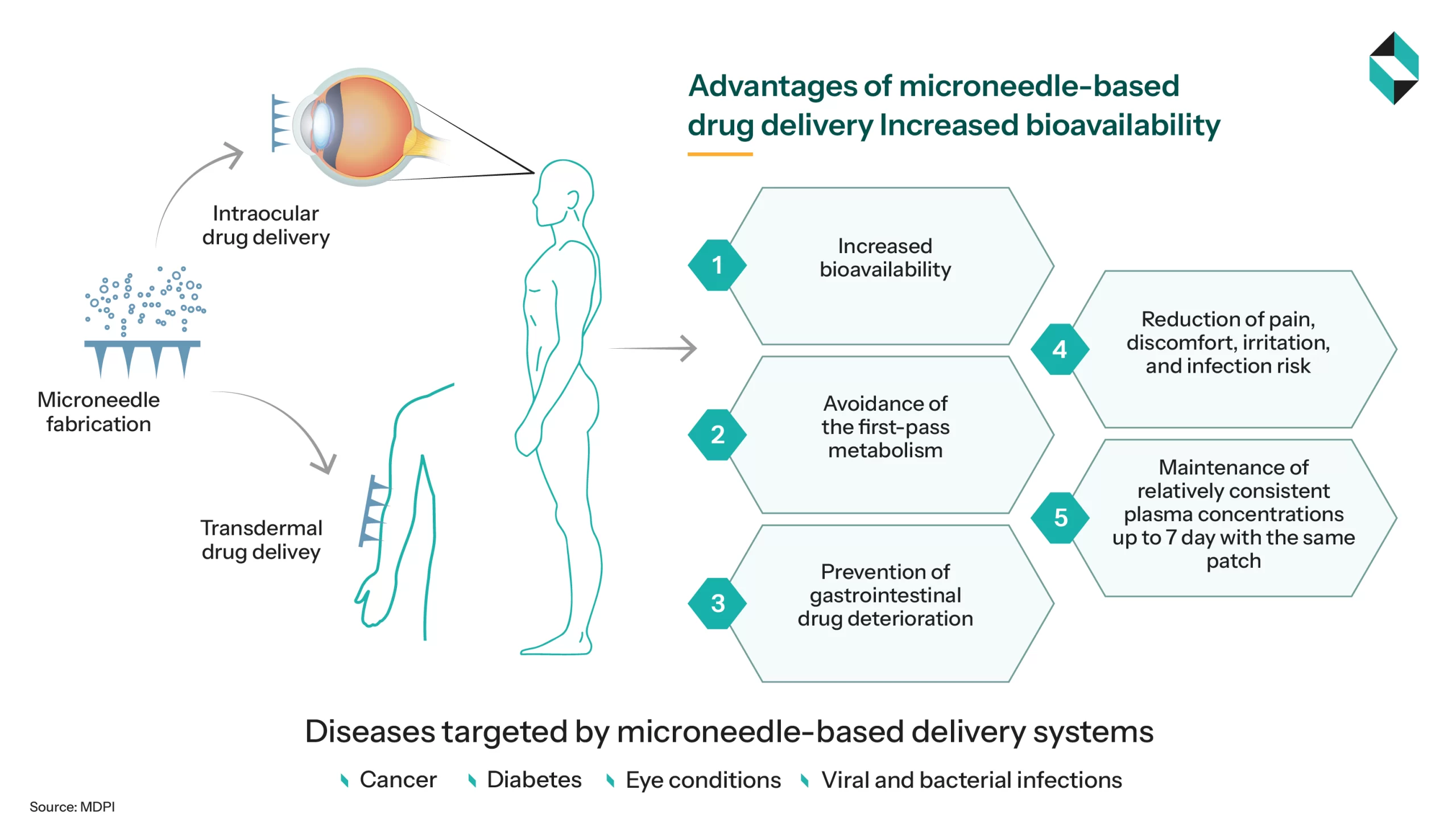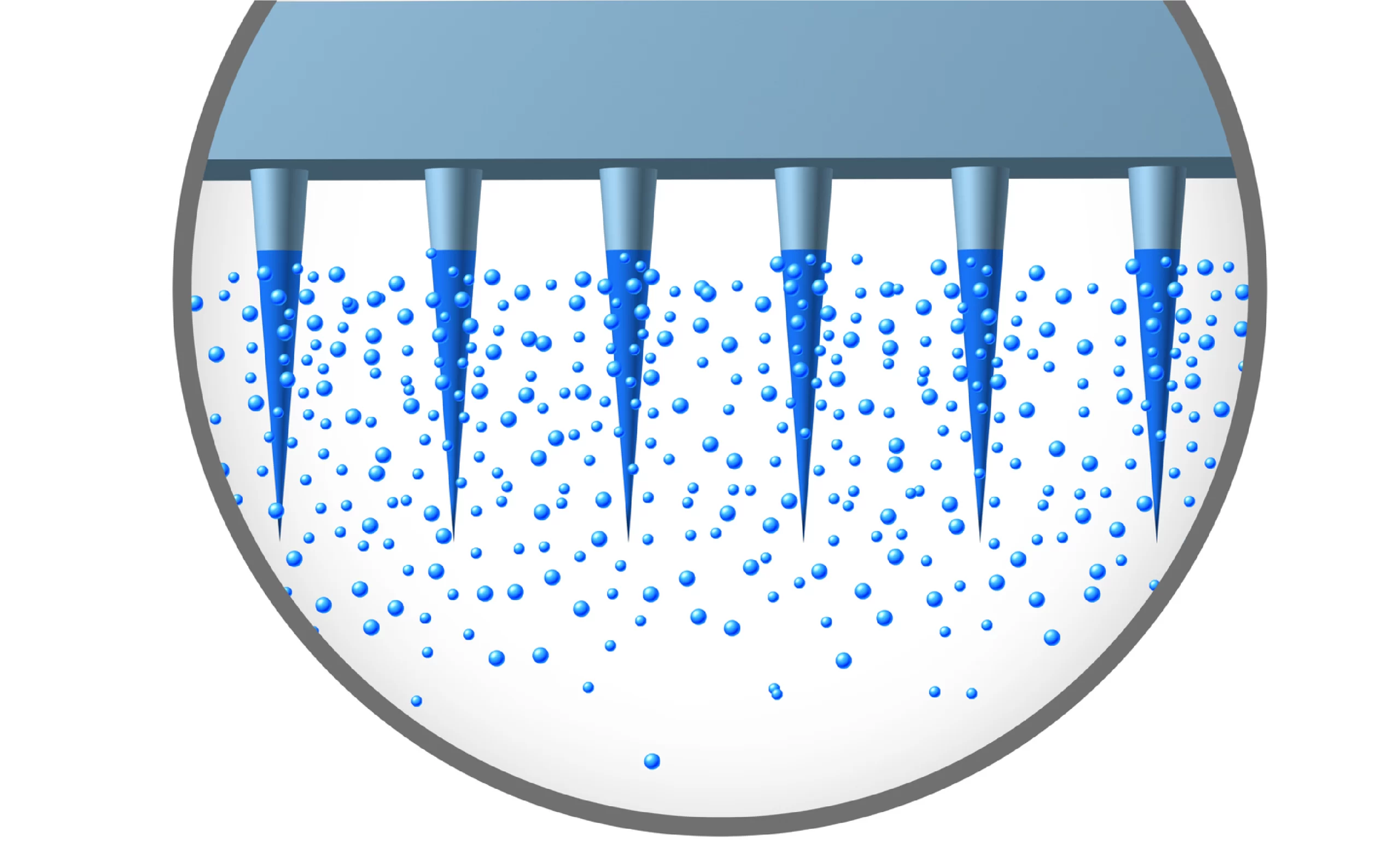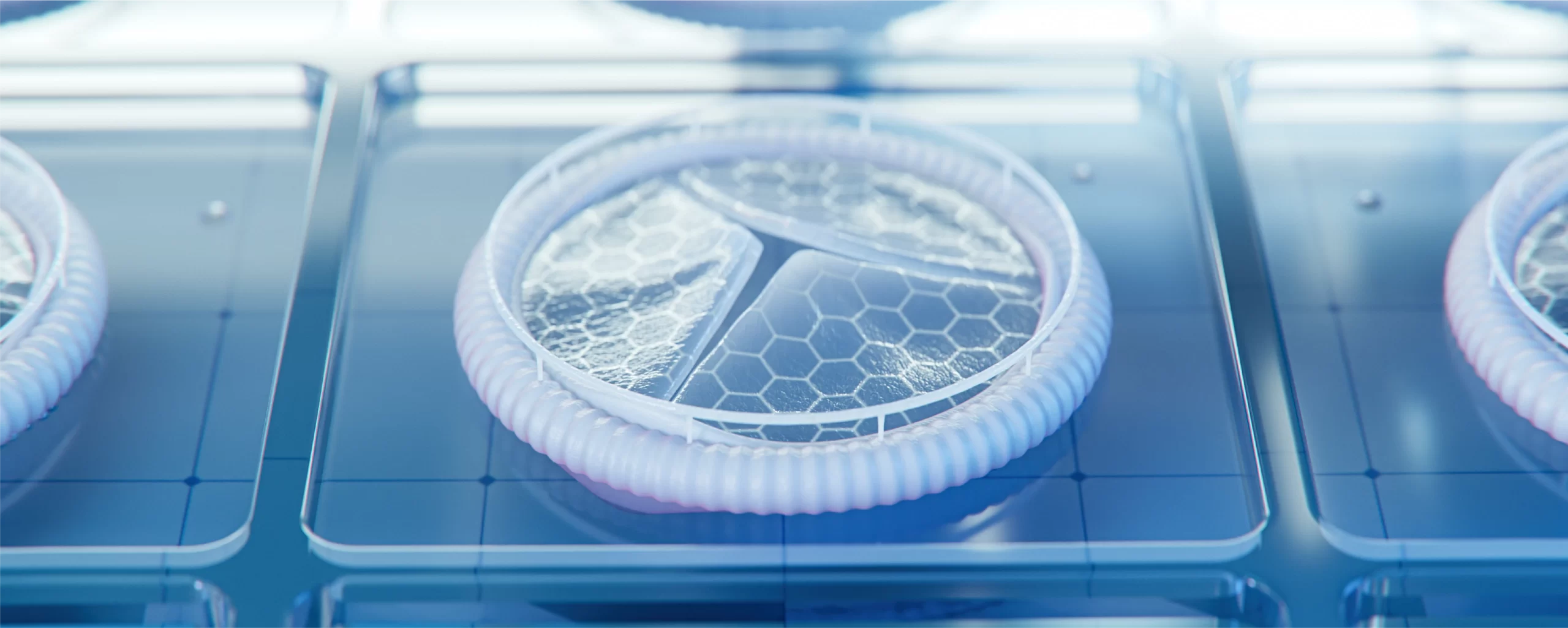Micro-needling Patches for Drug Delivery: Bringing Evolution in Non-Invasive Medicine
In recent years, micro-needling patches have emerged as a game-changing technology in the field of drug delivery. These patches, which use micro-sized needles to deliver drugs directly through the skin, have the potential to revolutionize the way we administer treatments, offering a non-invasive, convenient, and efficient alternative to traditional methods like oral pills or injections. This blog will explore the science behind micro-needling patches, their applications, benefits, challenges, and the future outlook for this innovative technology.
What Are Micro-needling Patches?
Micro-needling patches consist of tiny, fine needles that are designed to penetrate the skin’s outermost layer, the epidermis, without causing pain or significant damage. These needles, typically ranging from 25 micrometers to 2 millimeters in length, are arranged in an array on a patch that can be applied directly to the skin. The goal is to enhance the delivery of drugs or therapeutic agents across the skin barrier to the targeted tissue below.
The key feature of micro-needling patches is their ability to deliver drugs or vaccines painlessly by creating micro-channels in the skin, which significantly enhances drug absorption. These patches are often designed with dissolvable needles, allowing the patch to be worn for a set period, with the needles dissolving into the skin and releasing the drug as they do.
How Do Micro-needling Patches Work?
Micro-needling patches function by creating temporary channels in the skin, which bypass the skin’s outer protective layers (the stratum corneum) and facilitate direct access to the dermis. The microneedles can be solid, coated with drugs, or dissolvable.
Once the patch is applied to the skin, the microneedles penetrate the surface, creating micro-channels that allow the drug to be absorbed directly into the skin’s deeper layers. The dissolvable microneedles will dissolve after insertion, slowly releasing the drug over time. This method enhances drug bioavailability by avoiding the digestive system and liver metabolism, which can degrade the drug before it reaches its target.
Applications of Micro-needling Patches
Micro-needling patches have a wide range of potential applications in medicine and healthcare, including:
- Vaccination
- Micro-needling patches are being explored as an alternative to traditional injections for delivering vaccines, such as those for influenza or COVID-19. The small, painless needles can deliver vaccines without the need for syringes, making the process quicker, more cost-effective, and less intimidating, especially in global immunization efforts.
- Pain Management
- These patches are also being used to deliver local anesthetics and other pain-relieving drugs like lidocaine. The micro-needles can effectively deliver the drug directly to the area needing treatment, providing targeted relief without systemic side effects.
- Hormonal and Contraceptive Drug Delivery
- Microneedles can deliver controlled doses of hormones like estrogen or progesterone, offering a discreet and non-invasive method of birth control or hormone replacement therapy. These patches could replace oral pills or injections, offering convenience and improved patient compliance.
- Skin Treatments
- In the field of dermatology, micro-needling patches are being used for the delivery of anti-aging treatments, acne medications, or even stem cells for skin regeneration. These patches can improve the effectiveness of topical treatments by enhancing penetration into the skin.
- Diabetes Management
- Microneedle patches for insulin delivery could offer a non-invasive solution for diabetes patients, potentially replacing the need for daily injections. This could greatly improve patient comfort and compliance.
- Microneedle Patches in Immunotherapy
- Enhanced Vaccine Delivery: Delivering vaccines painlessly and effectively via MN patches
- Targeted Immune Response: Stimulating strong local immune responses for better protection
- Non-Invasive: Offering a less invasive alternative to traditional injection methods
- Microneedle Patches in Infectious Disease & Cancer Therapy”
- Infectious Disease Treatment: Using MN patches for controlled release of vaccines or antiviral agents.
- Cancer Immunotherapy: Targeted delivery of immunotherapies to stimulate the immune system against cancer cells.
- Localized Treatment: Directly delivering treatments to affected areas with minimal side effects.

Benefits of Micro-needling Patches
- Minimally Invasive
- One of the main advantages of micro-needling patches is their minimally invasive nature. The micro-needles are small enough to puncture the skin without causing significant pain or injury, making it a far more comfortable experience compared to traditional injections.
- Non-Painful
- Unlike traditional hypodermic needles, which can be painful, micro-needles are designed to be as painless as possible. Patients are less likely to experience the fear and discomfort typically associated with injections.
- Increased Bioavailability
- Because micro-needling bypasses the digestive tract and liver, drugs are absorbed more efficiently and rapidly into the bloodstream, increasing bioavailability. This means that smaller doses of drugs can be used for effective treatment.
- Sustained Release
- Many micro-needle patches are designed for controlled, sustained release, allowing for prolonged drug delivery over hours or even days, reducing the need for frequent administration.
- Improved Patient Compliance
- By eliminating the need for injections and oral medication, micro-needling patches make it easier for patients to adhere to their treatment regimens, especially for people who have difficulty with injections.
- Convenience
- These patches are easy to use and can be applied at home, allowing patients to self-administer their medication in a non-clinical setting, which is particularly beneficial for people with chronic conditions.

Comparison Between Micro-needling and Traditional Injections
| Feature | Traditional Injection | Microneedling Patches |
| Patient Compliance | Variable | High |
| Cold Storage | Often Required | Not Needed Often |
| Infection Risk | Higher | Very Low |
| Pain | High | Minimal to None |
| Administration | By Healthcare Professionals | Self-administered |
Challenges Facing Micro-needling Patches
Despite the many benefits, there are several challenges associated with micro-needling patches :
- Skin Variability
- The efficiency of drug delivery through microneedles depends on various skin properties, such as thickness, hydration, and age. For some individuals, micro-needles may not penetrate deeply enough to achieve the desired drug release.
- Manufacturing and Scalability
- Producing micro-needling patches at a commercial scale while maintaining consistent quality is a challenge. The micro-needles need to be precisely fabricated, and there are issues related to the mass production of dissolvable needles and the stability of the drug formulations.
- Regulatory Challenges
- Regulatory bodies such as the FDA and EMA have stringent guidelines for approving new drug delivery devices, and micro-needling patches are no exception. These devices must undergo extensive testing for safety, efficacy, and manufacturing consistency before they can be approved for public use.
- Cost
- The production cost of micro-needling patches can be higher than traditional drug delivery methods, which could make them less accessible in certain markets. However, as manufacturing processes improve, costs are expected to decrease.
- Patient Acceptance
- Despite their benefits, there is still a level of skepticism among patients regarding the safety and effectiveness of self-administered microneedle treatments. More education and awareness will be needed to overcome psychological barriers to adoption.
- Sterilization and Safety Issues
- Sterilization Complexity: Ensuring microneedle patches are properly sterilized without compromising their efficacy.
- Risk of Infection: Improper sterilization or handling can lead to contamination or infection at the application site.
- Needle Material Concerns: Ensuring the needles are safe and biocompatible to avoid adverse reactions.
- Long-Term Stability and Storage
- Degradation Over Time: Microneedle patches, especially those containing vaccines or drugs, may lose effectiveness if not stored properly.
- Storage Conditions: Some microneedle patches need specific temperature or humidity conditions to maintain their stability.
- Shelf Life: Developing longer shelf lives to ensure the patches remain effective for extended periods before use.
Market Size and Key Players
The global microneedling patches market is expected to grow substantially over the coming years, driven by an increasing demand for non-invasive drug delivery systems, especially in the fields of dermatology, immunology, and chronic disease management. According to a Grand View Research report, the global microneedles market is projected to reach USD 9.9 billion by 2030, growing at a CAGR of over 12% from 2023 to 2030.
Key players in the micro-needling patch market include :
- 3M: A leader in medical technologies, with a focus on microneedle-based delivery systems.
- Dermaroller: A prominent player in dermatology-related micro-needling technologies.
- Micron Biomedical: Specializing in microneedles for drug delivery, especially in vaccines.
- Vaxess Technologies: Known for its work in microneedle patches for vaccine delivery.
- BD (Becton, Dickinson and Company): BD is a major player in the medical device industry, and they have expanded their portfolio to include microneedling patches, particularly those aimed at improving skin health and delivering active ingredients through microneedling technology.
- Raphas Co., Ltd.: Raphas is a South Korean company known for its innovative microneedling patches, particularly those aimed at skin rejuvenation, anti-aging, and treating acne scars. They are one of the leading players in the market due to their advanced dermal delivery systems.
Regulations and Approvals
The regulatory landscape for microneedle patches is evolving, with approval from bodies like the FDA and EMA required before they can enter the market. The FDA has categorized microneedles as Class II medical devices under the 21st Century Cures Act, meaning they require clinical trials and demonstrations of safety and efficacy before approval. Regulatory approval can vary depending on the country and the type of drug being delivered.
Future Outlook
The future of micro-needling patches for drug delivery looks promising. Advancements in materials science, such as the development of hydrogels, nanoparticles, and smart sensors, will likely improve the functionality and efficiency of these patches. As the technology matures, micro-needling patches will likely become more mainstream, leading to a significant shift in how we think about drug administration.
Artificial Intelligence (AI) could play a critical role in personalizing drug delivery. AI algorithms can analyze real-time data from smart sensors embedded in the patches, optimizing drug release based on the user’s needs or health conditions. This can lead to more effective, tailored treatments.
Conclusion
Micro-needling patches for drug delivery represent an exciting frontier in medicine, offering patients a painless, effective, and convenient alternative to traditional drug delivery methods. While challenges exist, the potential benefits in improving bioavailability, patient compliance, and reducing healthcare costs make this technology highly promising. As the technology evolves and regulatory hurdles are overcome, microneedling patches may soon become an integral part of therapeutic strategies across various medical fields.



